Scientists Find 50% Chance Globe Hits Critical Temperature Threshold Within 5 Years, Conservation Groups Sue EPA Over Deadly Florida Water Pollution, Exxon Talks Up Dubious Recycling Plan, and more
May 13, 2022 – We gather news: You stay informed
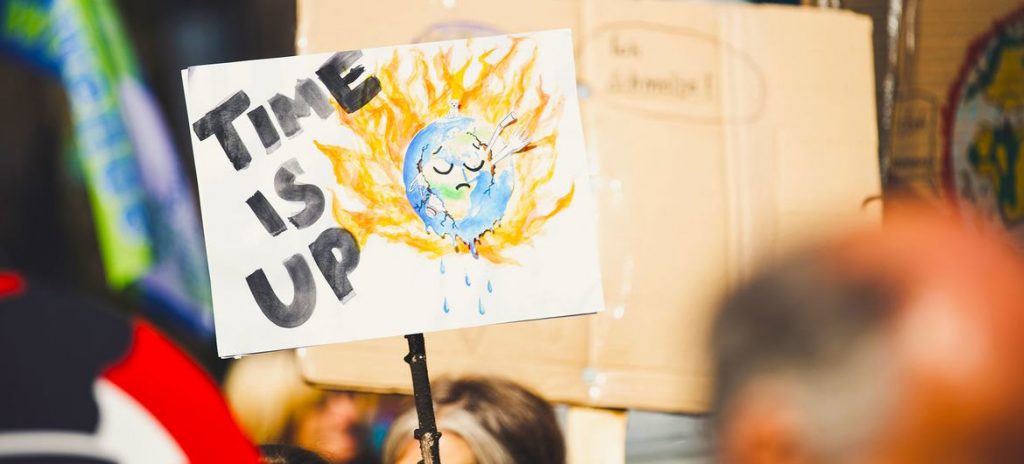
1. World Getting “Measurably Closer” to 1.5-Degree Climate Threshold
There is a 50:50 chance of average global temperature reaching 1.5°C above pre-industrial levels in the next five years, and the likelihood is increasing with time, according to the World Meteorological Organization (WMO). The 1.5°C target is the goal of the Paris Agreement, which calls for countries to take action to reduce greenhouse gas emissions to limit global warming. The Global Annual to Decadal Climate Update also reveals a 93% likelihood of at least one year between 2022 to 2026 becoming the warmest on record. “The 1.5°C figure is not some random statistic,” said Petteri Taalas, the WMO Secretary-General, but “rather an indicator of the point at which climate impacts will become increasingly harmful for people and indeed the entire planet.” Mr. Taalas warned that as long as countries continue to emit greenhouse gasses, temperatures will continue to rise.
Thank you for your generous gift that will help us continue the production of this weekly, free publication
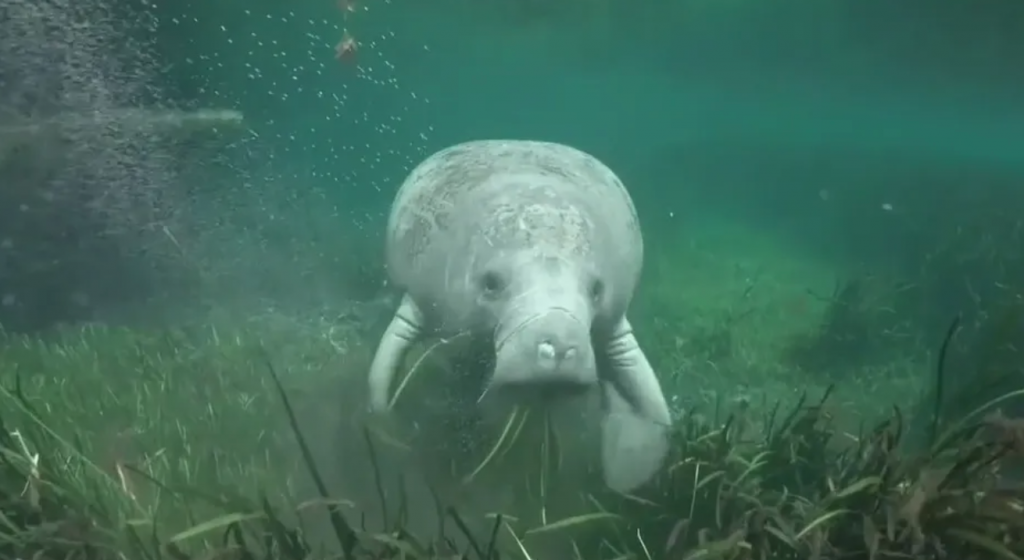
2. Florida Conservation Groups Sue EPA Over Water Pollution Killing Off Marine Life
Conservation groups in Florida have sued the US Environmental Protection Agency (EPA) for not doing enough to keep water pollution from killing marine life. In the lawsuit filed on May 10, the groups claim the current water quality played a role in more than 1,000 manatee deaths in 2021. The goal of the lawsuit is to push the court to require EPA to reinitiate consultation with the US Fish and Wildlife Service and National Marine Fisheries Service under the Endangered Species Act to reassess Florida’s water quality standards for the Indian River Lagoon. Sea turtles are also suffering from Florida’s water quality, as the pollution is causing them to grow tumors. “We’re asking EPA to get together with the expert agencies that oversee wildlife to figure out how the water pollution control limits have failed manatees and to fix them,” said attorney Elizabeth Forsyth.
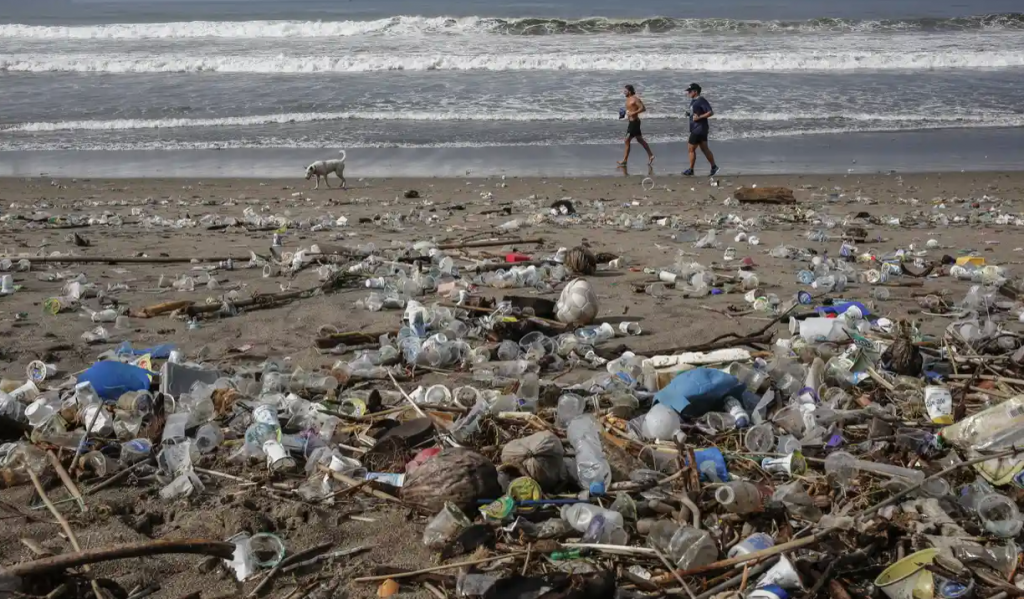
3. Exxon Doubles Down on “Advanced Recycling” Claims that Yield Few Results
Accused of misleading the public on the efficacy of plastic recycling, oil and chemical companies are pushing “advanced recycling.” Environmental advocates say it’s greenwashing, and litigators hope holding companies accountable for past lies might prevent the spread of a new one. In late April, California attorney general Rob Bonta started investigating ExxonMobil for its role in exacerbating the global plastic pollution crisis. Bonta says his investigation started with ExxonMobil because they’ve been a leader in the plastics industry and in the messaging around recycling. A recent report found that just 100 companies produce 90% of the world’s plastic pollution, with ExxonMobil as the top producer of single-use plastic. Like regular recycling, advanced recycling has shown few benefits. The process uses chemical processes to turn plastic into other materials, like fuel or plastic feedstock. It is emissions intensive and expensive to do.
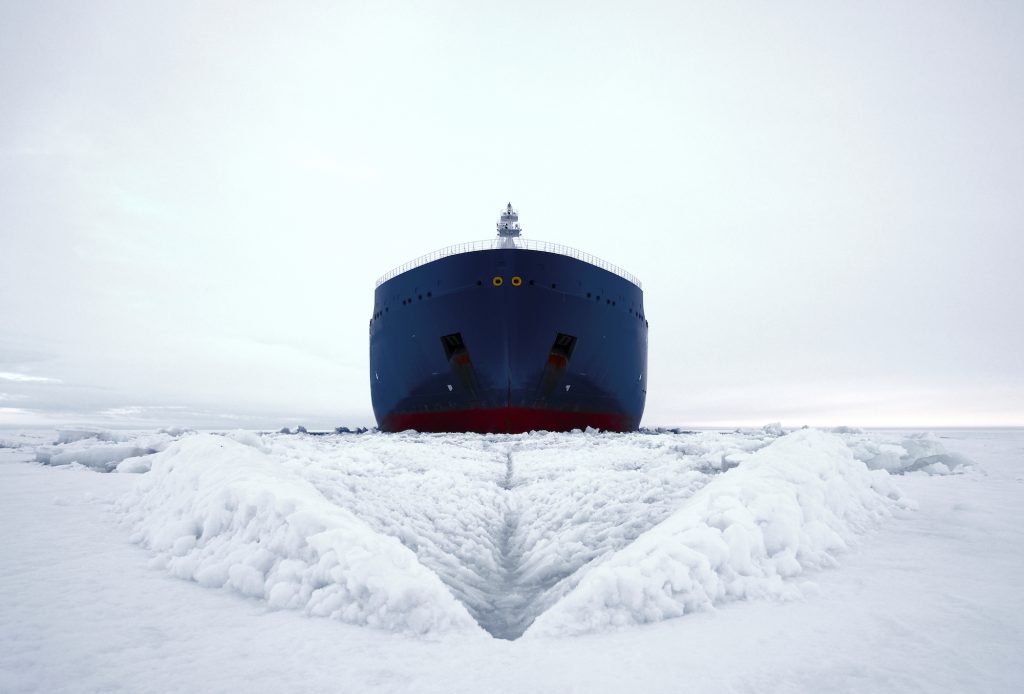
4. Natural Gas Carriers Account for a Quarter of Shipping Emissions in the Arctic
In 2021, just 26 natural gas tankers cruised through Arctic waters, nothing compared to the hundreds of fishing vessels operating there. But the giant tankers account for the largest share of CO2 emissions, a new analysis shows. The tankers accounted for 788,000 tons (almost 28%) of CO2 from Arctic ship traffic in 2019. Climate change is shrinking the Arctic ice cover, making it easier for ships to travel along the northern coast of Russia. Current estimates suggest that most of the Arctic Ocean could become ice-free during the summer as early as 2050. Any increase in ship traffic will increase the pollutant load in the Arctic, which is one of the most vulnerable environments on the planet. Study author Ekaterina Kim noted that “Ship traffic and pollution numbers keep rising, and the Arctic is melting fast. So can regulations keep up with the changes?”
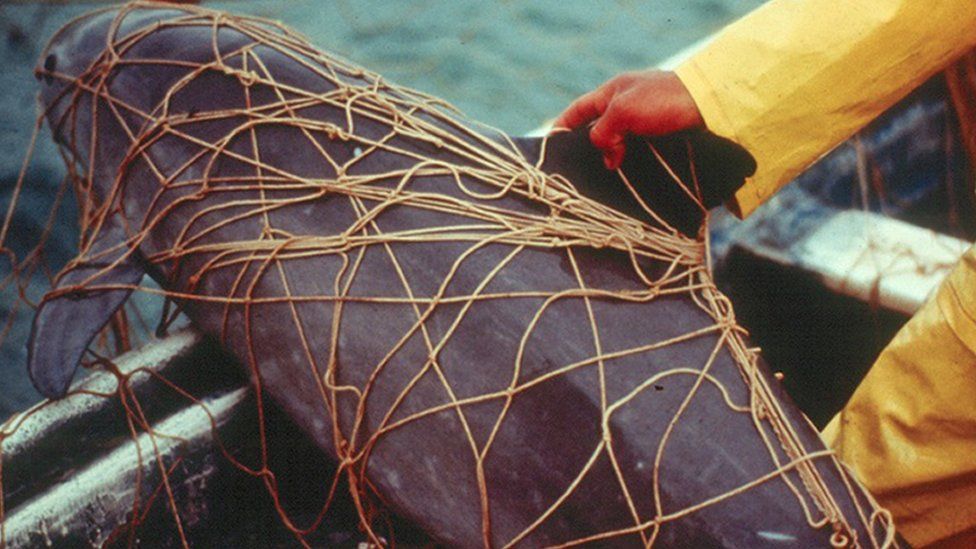
5. Despite Extremely Small Population, Vaquita Is Not Doomed by Inbreeding
The endangered vaquita still has a chance of survival, despite numbering only about 10 in the wild, according to a genetic study. However, it faces an existential threat from being caught in large weighted nets, known as gillnets. “Our study very clearly shows that the vaquita has a really good chance of avoiding extinction, if we are able to protect it, by removing the gillnets from its habitat,” said researcher Jacqueline Robinson. There was no reason to think the vaquita was “doomed” simply because it has small population sizes or low genetic diversity, she said. “It really comes down to our choices and actions in terms of giving the vaquita the best chance at surviving.” The study, which looked at genetic data, found the vaquita is not “genetically compromised” and should be able to bounce back from near extinction if its habitat is fully protected.
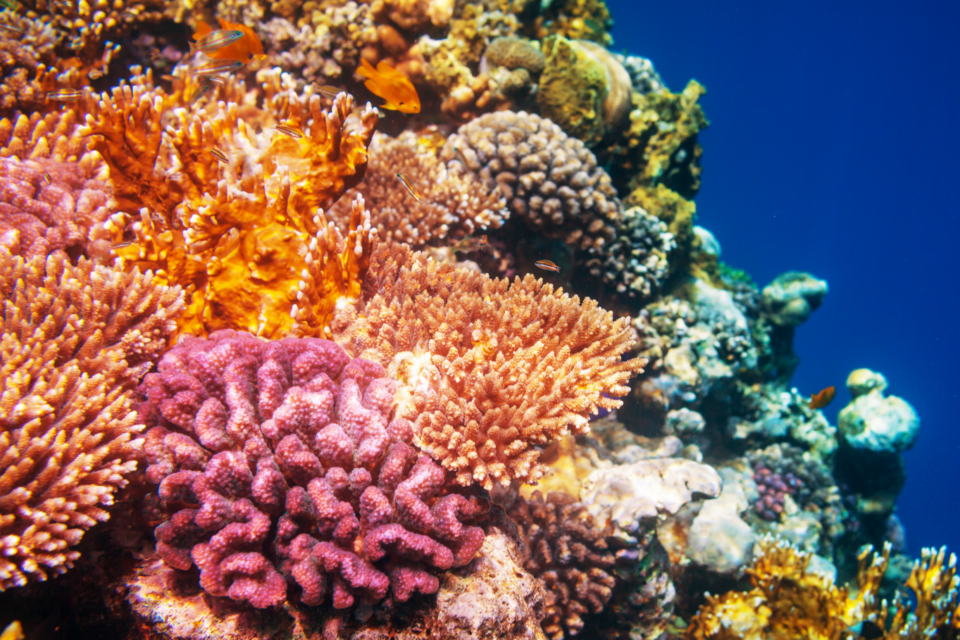
6. Sunscreen Ingredients Make Sunlight Toxic for Corals
Many of the chemicals that preserve shelf-life and protect skin from the sun in sunscreen are known to be toxic to reef biota. A study from Stanford University has investigated the mechanism by which oxybenzone, an organic compound found in many sunscreens, harms corals. Using anemones as study animals, rather than corals, which are harder to experiment with, the researchers found that anemones exposed to oxybenzone in artificial seawater all died within 17 days if they were exposed to sunlight. Anemones kept in similar conditions but without sunlight remained alive. They found that anemones and corals processed oxybenzone in such a way that the resulting metabolic products formed damaging free radicals when exposed to sunlight. Other research has shown that oxybenzone is one of several sunscreen ingredients harmful to reefs. Even those labeled “reef safe” could be causing unknown damage.

7. Scientists Hope to Grow Coral Reefs at the Base of Wind Turbines in Taiwan
Danish energy firm Orsted plans to grow corals on the foundations of offshore wind turbines to find out if the method can be carried out on a larger scale. The concept will be trialed in waters off Taiwan and is the latest step forward in the company’s ReCoral initiative. The goals of the project are to determine whether corals can be successfully grown on offshore wind turbine foundations and to evaluate the potential positive biodiversity impact of scaling up the initiative. Orsted says water temperatures at wind farms located further away from shore can provide more stability to corals, with “extreme temperature increases” prevented by what it describes as “vertical mixing in the water column.” The overarching idea of the ReCoral project is that this stability in water temperature will restrict the chance of coral bleaching, enabling the healthy growth of corals on turbine foundations.
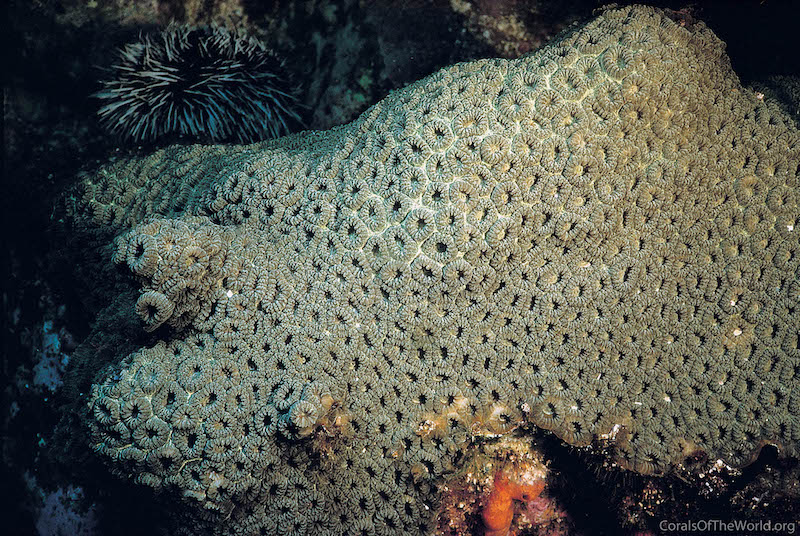
8. “Lost” Coral Species Resurrected After 50 Years
With about one-third of the world’s corals currently threatened by extinction due to climate change, researchers have made the encouraging discovery of a “lost” species of coral that had been hidden for more than 50 years. Scientists found the coral Plesiastrea versipora, which is widespread in the Indo-Pacific Ocean, was actually hiding a second, cryptic species. Lead author David Juszkiewicz said, “The species Plesiastrea peroni was described some 200 years ago; however, as time went on, taxonomists clumped it with Plesiastrea versipora.” The team collected samples from dives to study the morphology and microstructure of the coral skeleton and confirmed the hidden species of coral through genetic sequencing. Juszkiewicz said, “Being able to accurately identify species is paramount to quality ecological research and conservation decision-making, so this study will allow coral ecologists and biologists to know which species of Plesiastrea they are working on.”
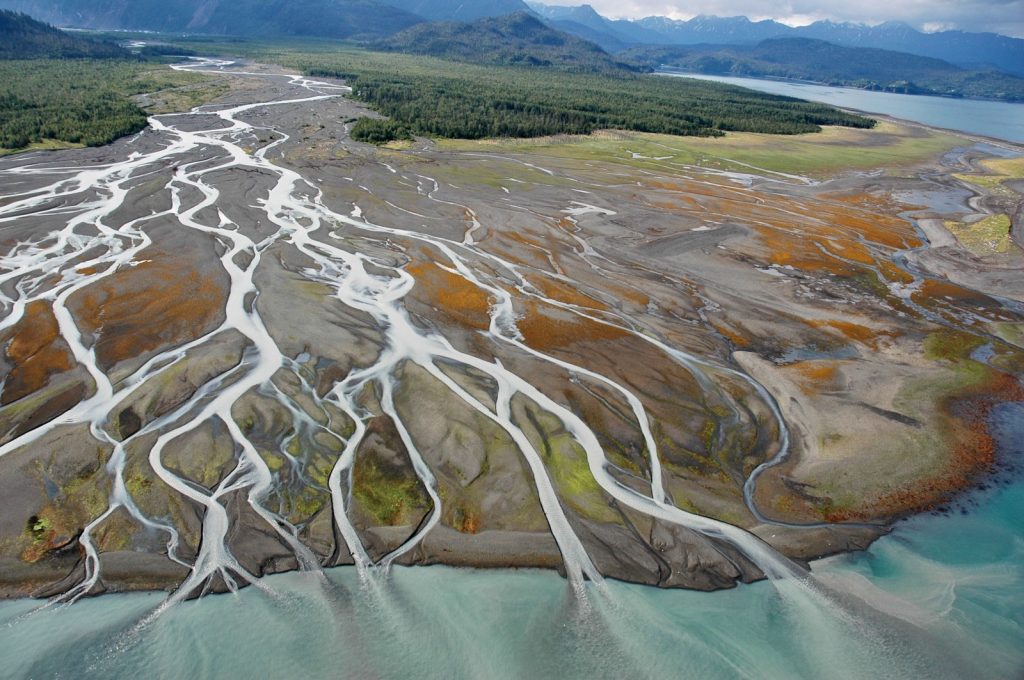
9. Invasive Species and Climate Change Impact Coastal Estuaries
Native species in California’s estuaries will experience greater declines as invasive species interact with climate change, according to a new study. These declines are expected not only because of climate-related stressors, but also because of the expanding influence of new invasive predators. “Climate change and biological invasions can interact in coastal estuaries in unpredictable ways,” said lead author Benjamin Rubinoff. “This increased risk of predation makes it difficult for native species that are already dealing with increasingly stressful environmental conditions.” “The stress gradients typical of West Coast estuaries are being rapidly altered by climate change,” said co-leading author Edwin “Ted” Grosholz. “These changing gradients are scrambling the historical predator-prey landscape, creating novel matchups and putting native prey at much higher risk from invaders.” Such changes are hard to predict, and only experimental studies can disentangle the interacting effects of climate change and invasions on struggling native species.
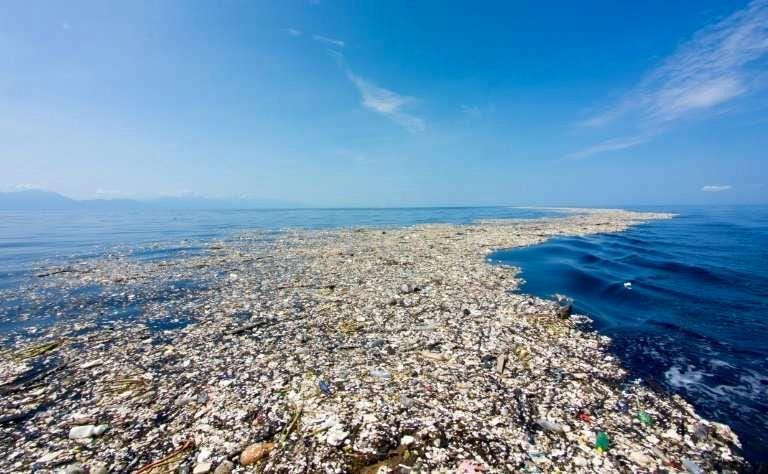
10. The Ocean’s Biggest Garbage Pile Is Full of Floating Life
In 2019, the French swimmer Benoit Lecomte swam over 300 nautical miles through the Great Pacific Garbage Patch to raise awareness about marine plastic pollution. He saw that floating at the surface of the patch were blue dragon nudibranchs, Portuguese man-o-wars, and other small surface-dwelling animals, collectively known as neuston. Scientists aboard the support ship systematically sampled the patch’s surface waters and found that there were much higher concentrations of neuston within the patch than outside it. The findings have not yet been subjected to peer review. But if they hold up, it may complicate efforts by conservationists to remove the immense and ever-growing amount of plastic in the patch. The results of the study “really emphasize the need to study the open ocean before we try to manipulate it, modify it, clean it up or extract minerals from it,” says coauthor Rebecca Helm.
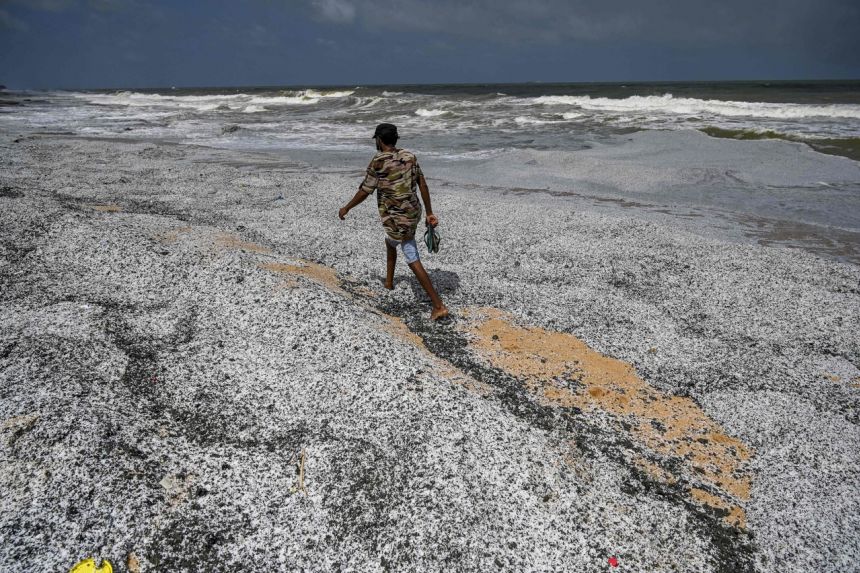
11. There’s a Massive, Unregulated Source of Plastic Pollution You’ve Probably Never Heard Of
A nurdle is a bead of pure plastic and is in almost all plastic products. Every year, trillions are produced from natural gas or oil, shipped around the world, and then melted and poured into molds that churn out plastic products. An estimated 200,000 metric tons of nurdles make their way into oceans annually. Under current conditions, approximately 10 trillion nurdles are projected to infiltrate marine ecosystems around the world each year. There, fish—including species eaten by humans—and seabirds consume them, blocking their digestive tracts and starving them to death. Like most plastics, they do not biodegrade, but they do deteriorate over time, forming the second-largest source of ocean microplastics after tire dust. Most state governments have no rules in place around monitoring, preventing, or cleaning up spills. Oceanographer Mark Benfield says, “We’re making these nurdles and basically spilling oil, just in a different form.”
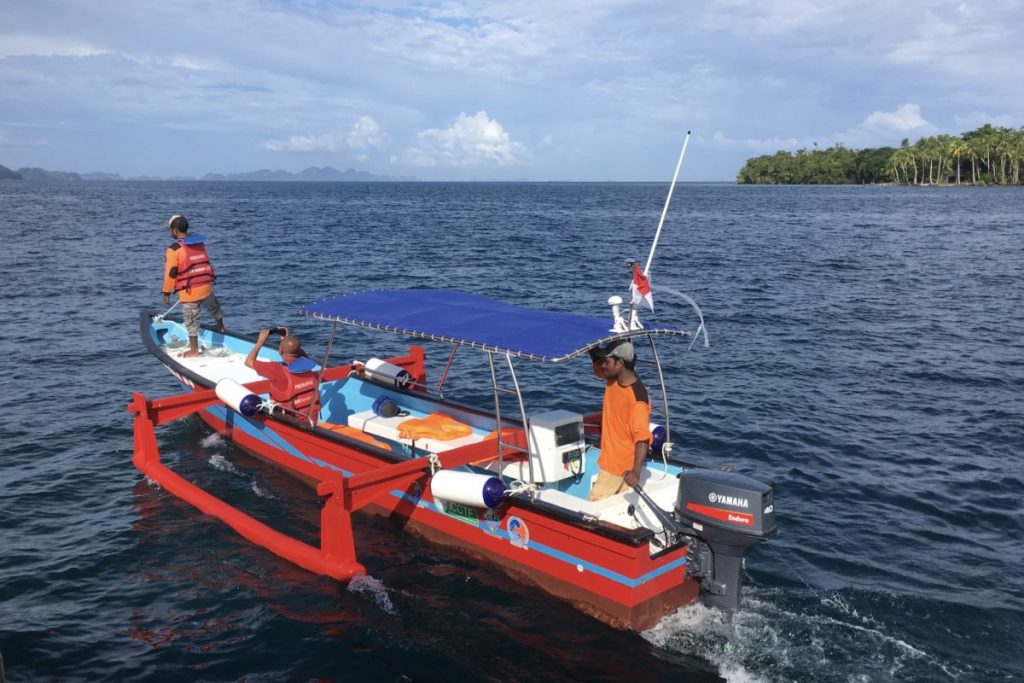
12. Fisher Groups Are the Marine Front Line in Indonesia’s War on Illegal Fishing
Methods like blast fishing and cyanide fishing flourished in Indonesia since the 1980s in response to rising commercial seafood demand. By 2006, illegal, unreported, and unregulated (IUU) fishing accounted for 20% of the total reef fish catch. Local fishers blame these practices for declines in fish catch. Indonesia’s marine area covers 5.8 million square kilometers (2.2 million square miles) and is home to the highest coral reef fish diversity in the world. However, regular marine patrols are costly and limited due to lack of infrastructure and human resources. So community-run monitoring groups of fishers take up the slack, reporting to authorities potentially harmful or illegal fishing activities. They also cover areas not traditionally monitored by government patrol teams. As a result, illegal and destructive fishing practices have declined by 70-80% over the past three years.
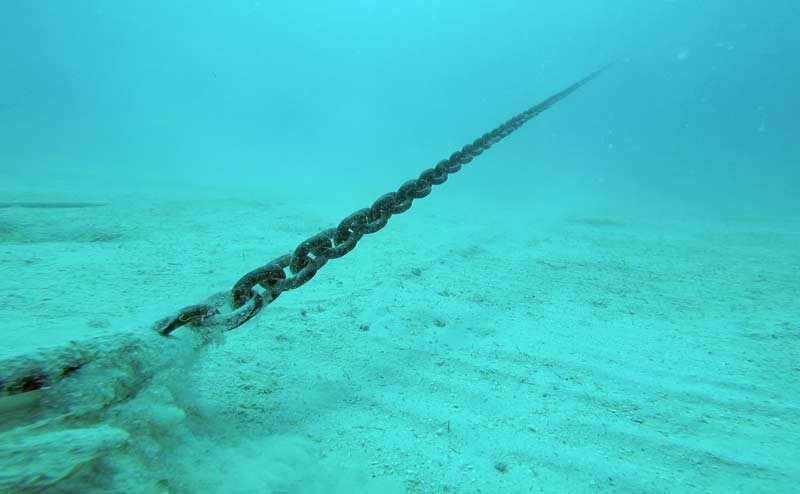
13. The Environmental Cost of Ship Anchoring on the Seafloor
Anchoring high-tonnage ships causes a substantial footprint on the seabed outside marine ports globally, but isn’t yet quantified. A new study presents the first characterization of the footprint and extent of anchoring in a low congestion port in New Zealand-Aotearoa, demonstrating that high-tonnage ship anchors excavate the seabed by up to 80 cm, with the impacts preserved for at least 4 years. The volume of sediment displaced by one high-tonnage ship (> 9000 Gross Tonnage) on anchor can reach 2800 m3. These numbers provide the first estimates of the footprint of anchoring to the coastal seabed worldwide. Seafloor damage due to anchoring has far-reaching implications for already stressed marine ecosystems and carbon cycling. As seaborne trade is projected to quadruple by 2050, the poorly constrained impacts of anchoring must be considered to avoid irreversible damage to marine habitats.
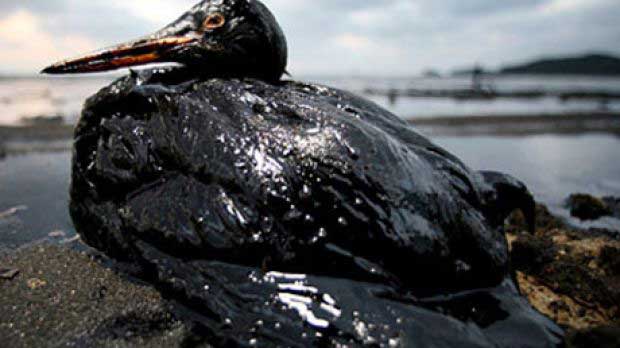
14. New Tool Helps Scientists Monitor the Effects of Chronic Oil in Arctic Wildlife
Sea ice loss is making the North more accessible than ever, increasing the probability of major oil spills as ship and tanker traffic multiplies. These spills expose the wildlife to new contaminants that can cause cancer in birds. A new tool called ToxChip analyzes changes in the DNA of animals exposed to oil. Changes in gene expression — ability to convert DNA instructions into functional products, like protein — tells us a lot about how it responds to specific chemicals. ToxChip can quickly detect changes in seabird genes in response to a contaminant and can be customized to species, contaminants, and genes of interest. The future applications of this tool are vast and promising. Species-specific ToxChips can help shape evidence-based policy recommendations or monitoring initiatives that would limit vessel traffic in endangered bird areas during the breeding season. It could also be useful beyond the avian population.
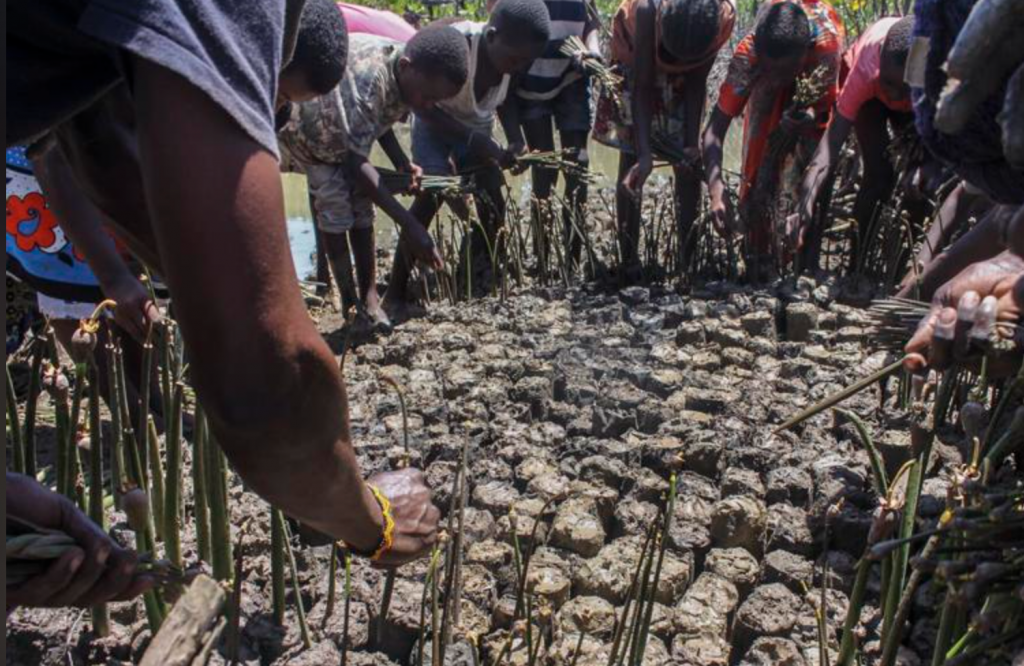
15. Initiatives to Grow African Mangrove Forests Aim to Combat Climate Woes
To protect coastal communities from climate change and encourage investment, African nations are increasingly turning to mangrove restoration projects, with Mozambique becoming the latest addition to the growing list of countries with large-scale mangrove initiatives. Mozambique follows efforts across the continent and is touted as the world’s largest coastal or marine ecosystem carbon storage project. Known as blue carbon, carbon captured by these ecosystems can remove CO2 from the atmosphere at a faster rate than forests. The restoration project aims to turn 457,100 acres in the central Zambezia and southern Sofala provinces into a forest that could capture up to 500,000 tons of CO2. Africa’s major mangrove forests have been decimated due to logging, fish farming, coastal development, and pollution, leading to increased emissions and greater exposure of vulnerable coastal communities to flooding and other threats to livelihood.

16. World’s Plastic Waste Mapped from Space for the First Time
A cutting-edge new tool uses satellite imagery from the European Space Agency and AI to map thousands of piles of plastic waste from space. Global Plastic Watch, developed by the Minderoo Foundation, can detect plastic waste sites as small as 5 by 5 meters, creating an interactive “living” map of plastic pollution in near real-time. The data gathered is believed to be a world-first, providing a historic insight into one of the planet’s most complex environmental challenges: how to stop plastic from flowing into oceans. Preventing illegal and legal plastic waste stockpiles from entering the ocean is critical to limiting harm. So far Global Plastic Watch has identified thousands of waste sites in 25 countries including all of Southeast Asia and Australia. 20% of the mapped waste sites were less than 250 meters away from waterways that send plastic into rivers and the ocean.
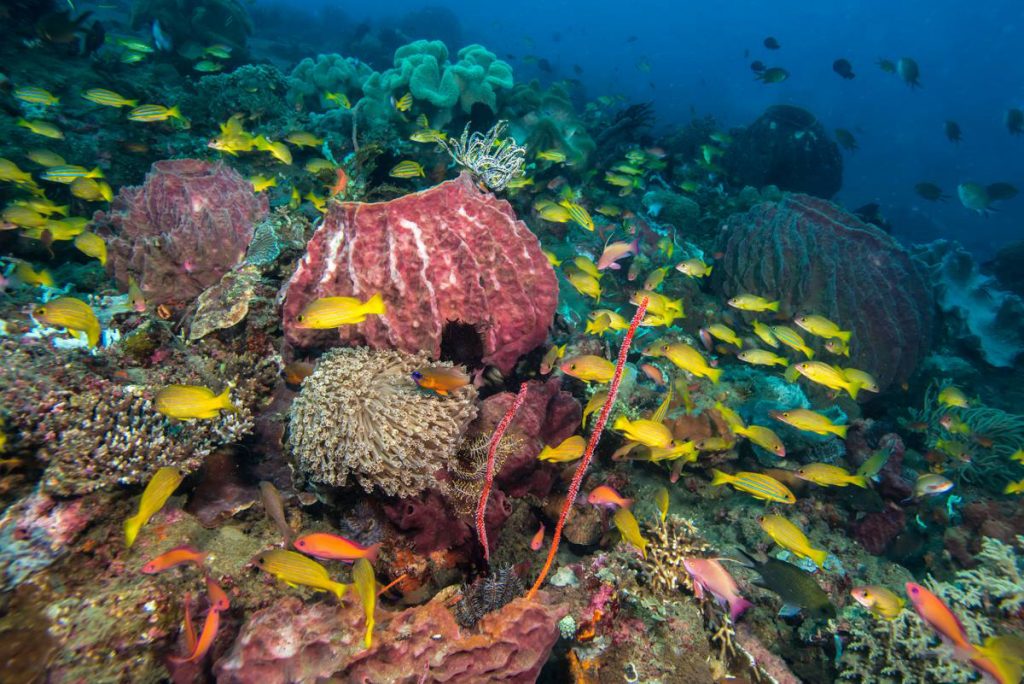
17. Scientist Finds Clues for Why East Timor’s Coral Reefs Are Surviving Climate Change
East Timor’s stunning coral reefs are among the most biodiverse worldwide. The island of Atauro, 30 kilometers north of Dili, boasts extraordinary coral reefs and marine biodiversity, including endangered, threatened, and protected megafauna. “It is part of the Coral Triangle, which is the marine epicenter of biodiversity,” says Dr. Catherine Kim. She discovered that Timor-Leste’s reefs — which sit on the southern edge of the Coral Triangle — appear to have lower levels of bleaching compared with other reefs. In fact, the temperature at the reefs was several degrees cooler than the satellites were picking up. Her research shows that the waters in Timor-Leste were cooler than predicted when the potential for bleaching events was highest. If current warming trends continue, most of the Great Barrier Reef’s coral will be gone within a century, but the reefs of Atauro may stay safe if other threats are managed.
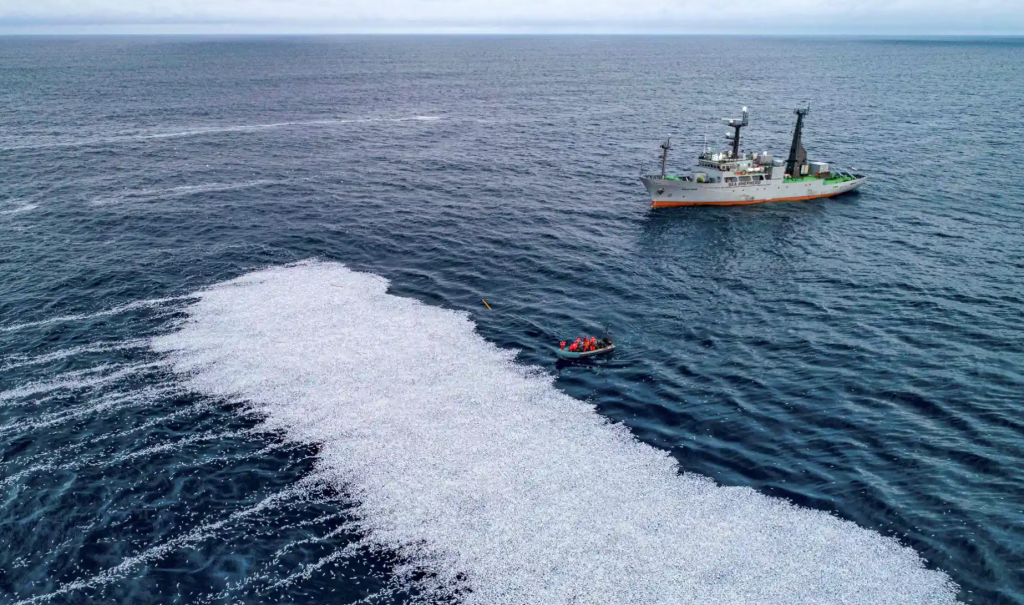
18. Growing Scandal of Fish Waste Attributable to Bottom Trawling, Imprecise Gear
In 2019, at least 230,000 tons of fish were dumped in European Union waters. Most of the waste comes from bottom-trawling, a method that scrapes the seafloor, indiscriminately scooping up everything in its path. But this figure is a small fraction of a larger global issue. The UN Food and Agriculture Organization estimates that 35% of all fish, crustaceans, and molluscs harvested from oceans, lakes, and fish farms are wasted or lost before they ever reach a plate. Fish are highly perishable and fragile, making them more vulnerable to waste. Fish populations are already threatened by overfishing, pollution, and the climate crisis. With rates of fish consumption projected to double by 2050, waste is increasingly on the radar of regulators. Most fish waste starts at the point of extraction. The main culprits are imprecise fishing gear and policies that allow fishers to discard non-target species.
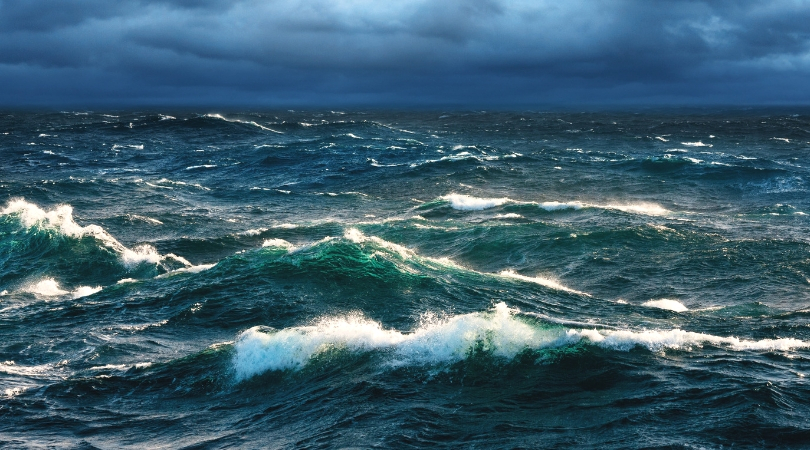
19. Earth Suffers “Ocean Amnesia” Because of Global Warming
The ocean is suffering from “amnesia” because of climate change, according to new research. Scientists assessed projections from Earth System Models and found that across climate models, ocean “memory” decline was a collective response to human-induced global warming. Compared with the atmosphere’s fast weather fluctuations, the slowly varying ocean exhibits strong persistence, or “memory,” meaning the ocean temperature tomorrow looks a lot like it did today. That memory is often used for predicting ocean conditions. Ocean memory is related to the thickness of its uppermost layer, the mixed layer. Deeper mixed layers have greater heat content, which confers more thermal inertia that translates into memory. However, the mixed layer over most oceans will become shallower in response to continued warming, resulting in a decline in ocean memory. As greenhouse gas concentrations continue to rise, such memory decline could affect marine animals and plants.
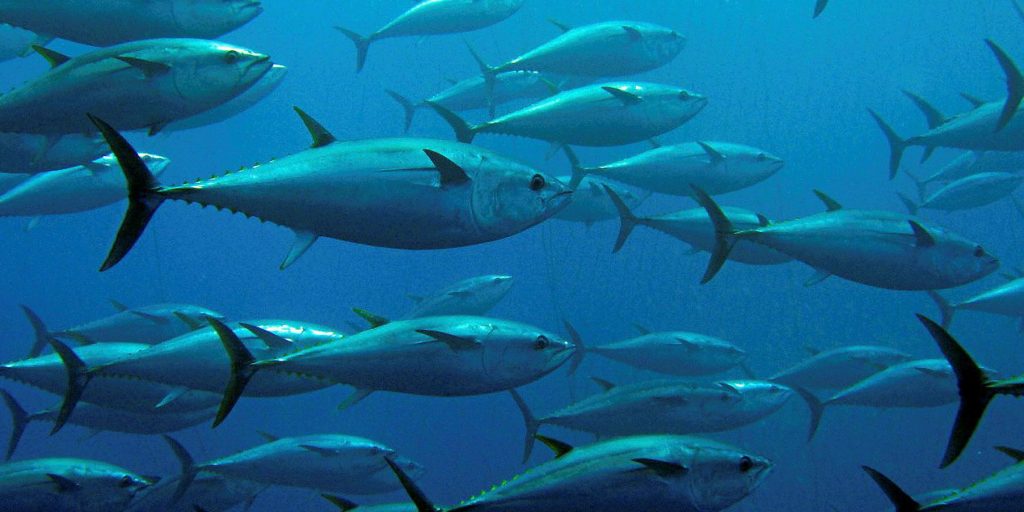
20. New Research Pinpoints “Blue Corridors” for Highly Migratory Fish
Researchers have pinpointed four high-traffic areas in the Pacific Ocean that should be considered high priority if conservation efforts for large pelagic fishes such as tuna, blue marlin, and swordfish are to succeed. By studying the tendency of fish to return to their birthplace to reproduce and pairing that knowledge with catch distribution maps and tagging and genetic sequencing studies, researchers identified the tentative migration routes of 11 tuna and other large pelagic fish in the Pacific Ocean. The researchers superimposed the information and noticed that several species use the same migration routes. “Those high-traffic areas should become parts of blue corridors, which are routes where strict fisheries management measures or partial bans of industrial fishing ought to be enforced to allow for increased connectivity of habitats and thus allow populations of marine species to maintain themselves,” said Dr. Daniel Pauly, co-author of the study.
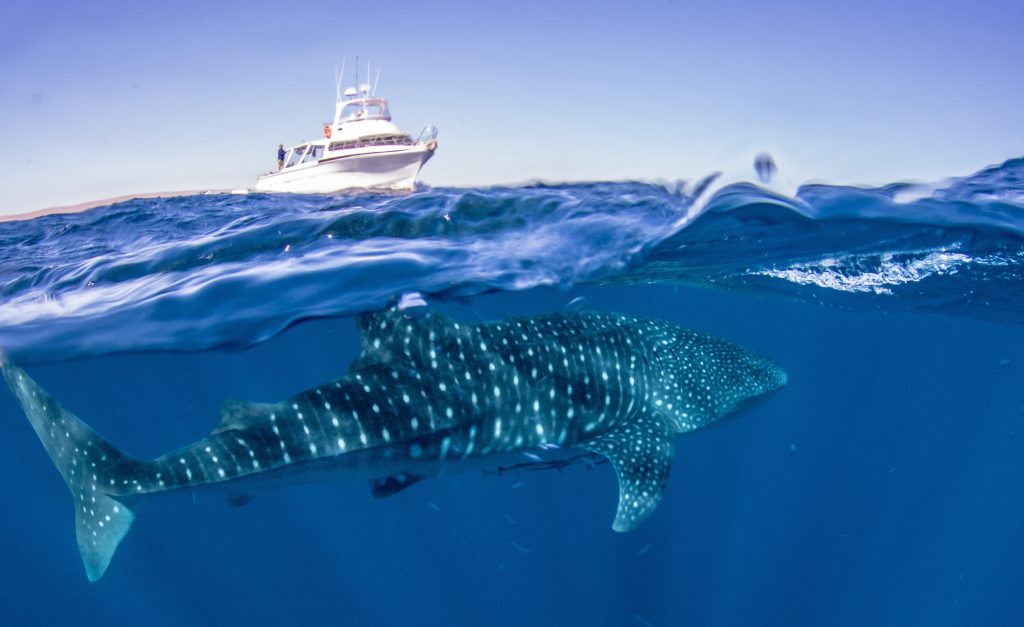
21. Shipping Poses Significant Threat to the Endangered Whale Shark
New research indicates that lethal collisions between whale sharks and large ships are vastly underestimated. Whale shark numbers have been declining in recent years in many locations, but it is unclear why. Because whale sharks spend a lot of time in surface waters and gather in coastal regions, experts theorized that collisions with ships could be causing substantial whale shark deaths. Researchers mapped shark “hotspots” that overlapped with global fleets of cargo, tanker, passenger, and fishing vessels – the types of ships capable of striking and killing a whale shark – to reveal that 90% of whale shark movements fell under the footprint of shipping activity. The study also showed that whale shark tag transmissions ceased more often in busy shipping lanes than expected, even without technical failures. The team concluded this was likely due to whale sharks being struck, killed, and sinking to the ocean floor.
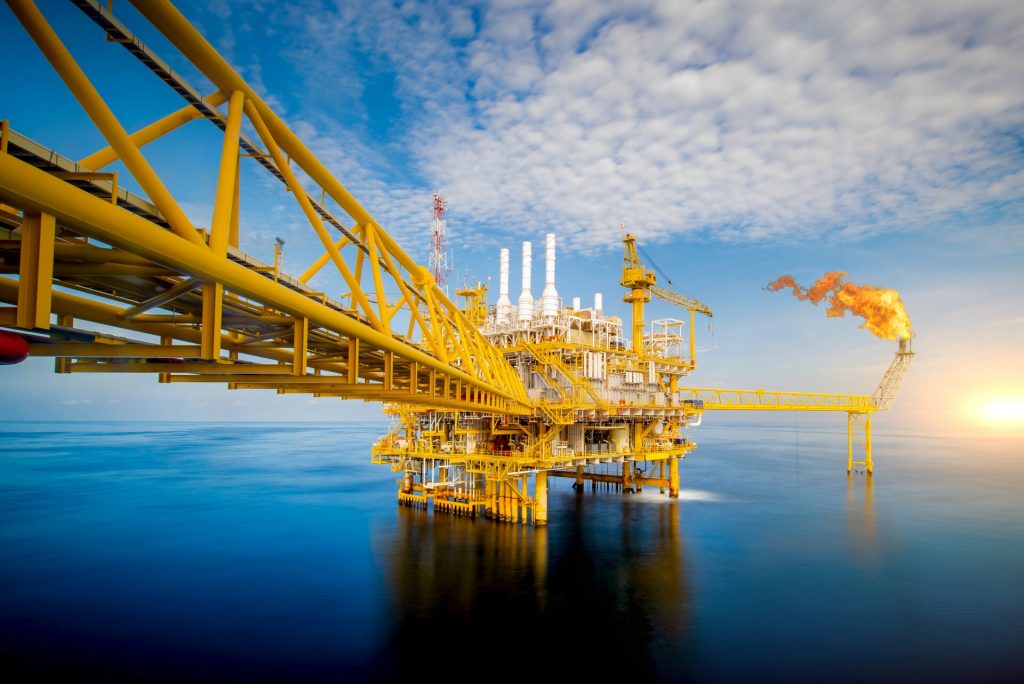
22. US Rules for Offshore Carbon Capture and Storage Start Taking Shape
US officials are finalizing regulations to establish a framework for the leasing and oversight of offshore carbon capture and storage (CCS) facilities, despite some unanswered questions concerning safety and technical issues for what could be a critical tool in fighting climate change. The framework could pave the way for auction-style lease sales for CCS, similar to offering leases for oil or wind energy production. The US Department of the Interior, which oversees the US Bureau of Ocean Energy Management (BOEM), must promulgate new regulations by November 2022, as directed by last year’s Infrastructure Investment and Jobs Act. That bill amended existing laws covering offshore energy development to include CCS. How far the CO2 “plume” will migrate underground, what happens if it drifts off the lease, and who holds responsibility for monitoring and the duration of liability are some of the questions that BOEM cannot yet answer.
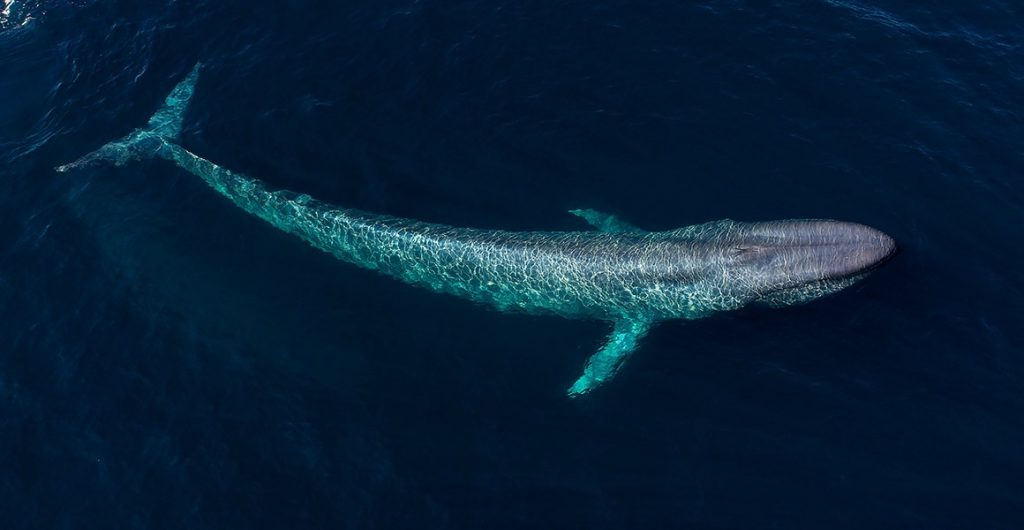
23. Largest-Ever Study of Its Kind Reveals Whales Evolved in Three Rapid Phases
A new study reveals that the diversity we see in whale skulls was achieved through three key periods of rapid evolution. The study gathered the most expansive 3D scan data set ever for whale skulls spanning 88 living species (representing 95% of extant cetacean species) and 113 fossil species and covering 50 million years of evolution. Whales transitioned from being land-based to wholly aquatic in just eight million years. The first period of rapid evolution happened 47.8 – 42 million years ago. This is when the ancient whales known as Archaeocetes first took to the water. In the second period, toothed whales diverged from baleen whales, and in the last period, highly specialized cranial evolution took place. Specimens are well documented because their bodies are easily preserved in ocean sediment and their size makes them much easier to find and recover for study.
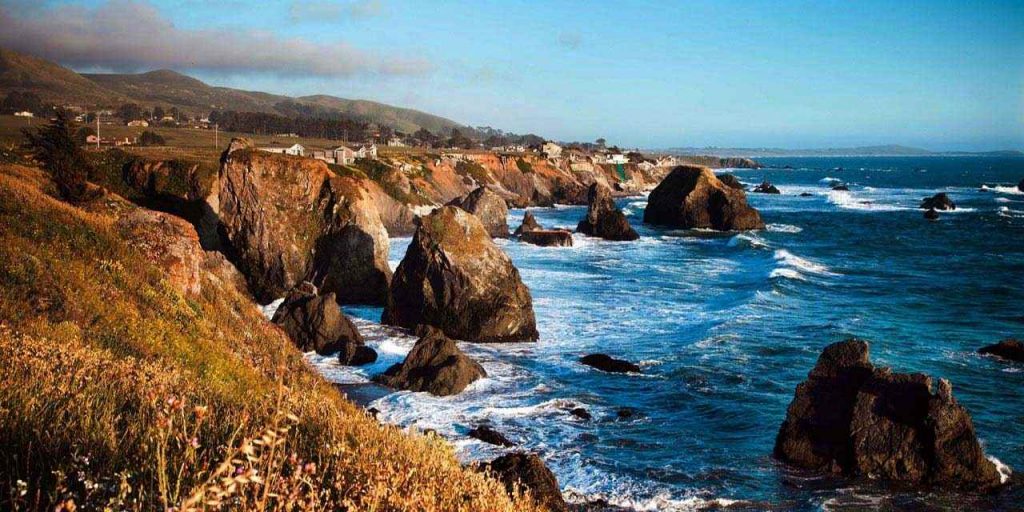
24. Sea Urchin Fishing Banned in Turkey Over Depletion Concerns
The Turkish government has imposed a ban on fishing for sea urchins in the Marmara Sea due to overfishing concerns. Urchins are among the few organisms that help keep invasive algae in check. Hunting sea urchins has been banned in the past, but regulations were lifted once again earlier this year, raising concerns about the fate of the species that serves as a significant part of the ecosystem in the landlocked Marmara Sea, the site of last year’s marine mucilage catastrophe. The phenomenon is associated with a boom in algae triggered by an overload of nutrients due to changing climate conditions and more significantly, heavy pollution. The ban is part of the Marmara Sea Action Plan, drafted to combat last year’s mucilage threat and its possible recurrence. The plan targets curbing potential sources that may pollute the Marmara. It also includes efforts to preserve its ecosystem.
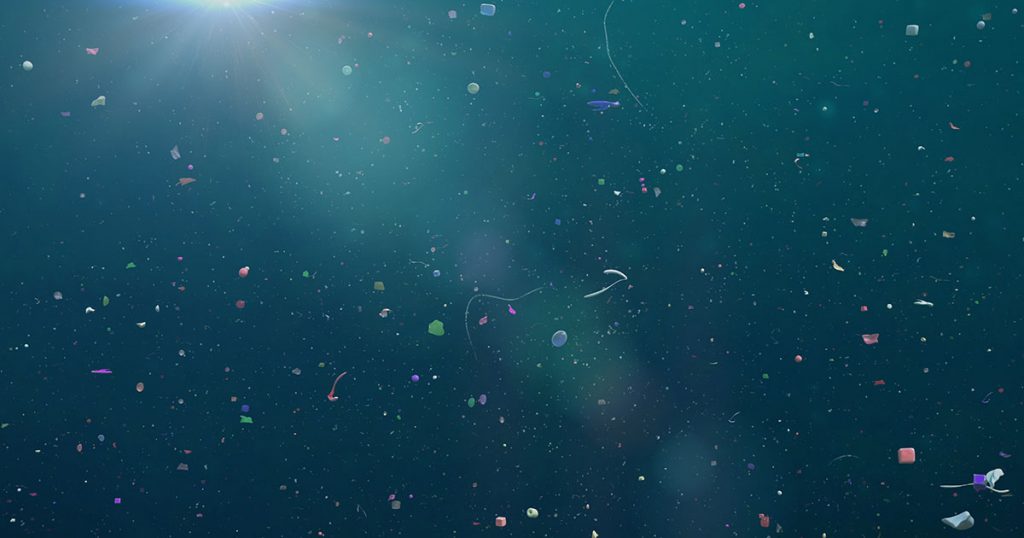
25. Micro- and Nanoplastic From the Atmosphere Is Polluting the Ocean
A new study shows that wind can transport micro- and nanoplastic particles great distances — and much faster than water can: in the atmosphere, they can travel from their point of origin to the most remote corners of the planet in a matter of days. “Air is a much more dynamic medium than water,” says co-author Dr. Melanie Bergmann. “As a result, micro- and nanoplastic can much more quickly penetrate those regions of our planet that are most remote and still largely untouched.” Once there, the particles could affect the surface climate and the health of local ecosystems. “We need to integrate plastic into monitoring programs for air quality,” Bergmann stresses. To reduce environmental pollution from plastic, countries need to reduce the production of new plastic on the basis of an international treaty, as experts recently wrote in a letter to the journal Science.
/




